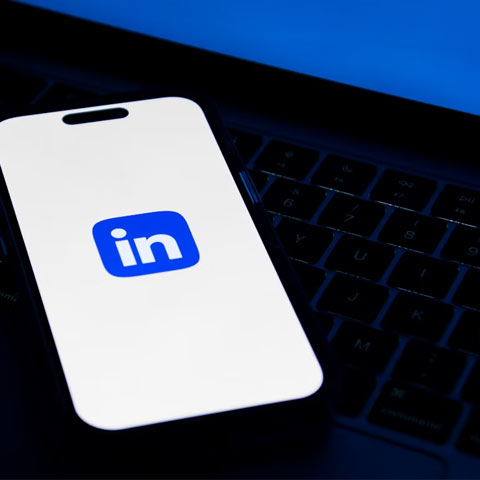How to Turn One Idea into Multiple Content Assets

Audiences, networks and search engines love content marketing but it can be time consuming to keep generating fresh content regularly. Thankfully, you don't have to. Download this brief to learn why content marketing is so effective with audiences and search engines and how you can turn one idea into multiple marketing tactics and touch points.
Get the downloadBelow is an excerpt of "How to Turn One Idea into Multiple Content Assets". To get your free download, and unlimited access to the whole of bizibl.com, simply log in or join free. |

|
Why webinars have the most content marketing value for SMBs.
Content marketing is growing in popularity and importance, both in small and large organizations:
- Sixty percent of B2B marketers plan to increase their spending on content marketing. (Content Marketing Institute) Content marketing costs 60 percent less than traditional marketing and generates three times as many leads. (Demand Metric)
- Website conversion rate is six times greater with content marketing. (Kapost.com)
- Seventy percent of consumers prefer getting to know a company through articles rather than ads. (Content Plus)
One of the biggest challenges facing marketers is the time and effort required to constantly create new, engaging content for your current and potential customers.
Some marketing consultants urge you to just keep creating and publishing new content, but that model takes too much time for business owners and SMB marketers who already have too many things on their plate. Fortunately, there’s a better way.
Investing in the creation of one key asset and then dividing it into many other formats can help you meet your goal of creating frequent, highvalue content with less efforts. Not only will this save you time and money, but it also allows you to leverage your efforts to get a greater return on investment.
The key to this strategy is that initial high-quality piece of content. Most content marketing efforts start with something small, like a blog post, short video or online poll. But in this report, we start with a webinar — a larger, more valuable piece of content — and show you how to turn that into many other products.
Why Start With a Webinar?
A webinar is a powerful content marketing tool that has some advantages over other content pieces. For starters, a webinar allows you to:
Gather rich data on your registrants
Right when people sign up for a webinar you have their contact information and maybe some details about their jobs as well (if you’ve asked for them on the webinar registration page). Obviously, you want registrants to actually show up to your webinar so you can interact with them and gather more data on their engagement with your content, but even if they do not attend, you still have their contact details and can begin to market to them.
Engage your prospects in a live environment
With a static piece of content, your audience may just receive your material and put it aside to consumer later, often forgetting about it completely. Since participants set aside time to attend your webinar, you know that those who attend will actually see your content.
Test the market
A webinar is a fast, low-cost way to test your ideas in the market. Because participants interact during the webinar itself, you can see which of your points resonate most, which are challenged, which are confusing and need to be clarified, and which are the most useful — all from their point of view, not just yours. This gives you valuable insight into the future content you publish, because you can focus on making it more engaging and meaningful for your market.
Collect even richer data on your participants
You can learn a lot about a webinar participant in the hour or less it takes you to present your topic. Webinar platforms like GoToWebinar show you how engaged each participant is with your content and counts how many questions each participant asked or answered. It also keeps track of the exact questions each person asks. From all this you can start to determine engaged prospects and tailor your marketing efforts to the topics they expressed interest in during your event.
Commit to a deadline
Scheduling an event also requires your organization’s commitment to creating and presenting the content. You can prioritize the preparation, motivate other stakeholders who want to have input into the process and coordinate the project effectively because it has a fixed deadline — the webinar date!
Create multimedia content
A webinar contains a wide variety of content in different formats: video, slides, audio, Q&A, polls, surveys, summary text, detailed text and so on. All of this material can be used for future content marketing — as we will see soon.
Create new content during the actual event
You create a lot of material in preparing for the webinar, but the webinar itself creates new content you can use for future content marketing. The most obvious is the webinar recording, but you also have questions sent in advance, questions asked during the webinar, chat comments, poll results, post-webinar surveys and unscripted insights from the presenter.
Get more ROI from your other webinars
If you’re already running regular webinars, you will now get more value from them because of all the extra content pieces you will be able to create. In fact, just knowing that reduces the work for each webinar. You can aim to get it to 80 percent effective, and ignore all the extra effort striving to make it perfect, because you know you will get so much more from it later.
How to structure your webinar for multimedia success
One of the best formats for your webinar is a list of questions, problems, tips, mistakes or challenges. List topics are very popular with marketers because they are easy to construct and easy for your audience to understand. Plus, they give you and your audience a clear structure during the webinar.
The other big advantage of a list is that it’s easy to spin off into other products. For example, a webinar titled, “Seven Ways to Sell Your Home for More,” can easily be turned into seven articles, seven short video clips, seven podcast episodes, a slide presentation and a seven-item checklist.
Of course, a list topic isn’t your only choice. Any presentation that makes a number of distinct points can be split up into other products in a similar way.
If you’re planning a 30–45 minute webinar, aim for five to seven main points. While fewer points than that allows you to examine each in more depth, it gives you fewer spin-off products. If you have more, it can discourage attendees because they think it will be too rushed to cover anything useful.
One of the easiest ways to craft a title for your webinar is by getting inspiration from magazine covers. Simply head over to Magazines.com and browse the covers for an interesting list headlines you can adapt. For example:
- “6 Instant Weight Loss Tricks” can become “6 Instant Social Media Marketing Tricks”
- “25 Life-Changing Road Trips” can become “7 Life-Changing Social Media Marketing Tricks”
- “Concealer Tricks from the Pros” can become “Home Buying Tricks from the Pros”
- “263 Hot Looks and Sexy Hair Secrets” can become “7 Hot Trends and Sales Strategies”
- “The Easy Way to Big Arms” can become “The Easy Way to High-Performing Teams”
Another option for creating compelling titles is to use an online headline generator, such as these two free tools:
HubSpot’s Blog Topic Generator: http://www.hubspot.com/blog-topic-generator
Portent’s Content Idea Generator: http://www.portent.com/tools/title-maker
Your webinar title doesn’t have to explain everything about the webinar. It’s only the attention-grabbing headline to get your webinar announcement noticed in somebody’s cluttered inbox. The rest of the webinar description will fill in the details.
Plan your webinar with other formats in mind
In addition to the usual work you do in preparing and presenting the webinar, keep these points in mind to help leverage it into different content pieces.
Curate some content
In your research, you might come across other people’s material, such as articles, blog posts, infographics or white papers. If this content is public, share it with your network.
Prepare relevant polls and surveys
Many questions in webinar polls and exit surveys are about the webinar experience itself, so they are only useful during the webinar. However, if you add a few questions about the webinar topic, you can use the results later in your content marketing (see below for an example).
Invest in your slide deck
As you build your slide deck, remember its use for future content marketing pieces as well. Invest in creating visual slides, while strictly respecting copyright, and creating at least one slide for each of the main points.
Get permission from your audience
Early in the webinar, notify your audience that you’re recording it for future use and that you might use their contributions for other materials. Of course, you should also agree on this in advance with guest presenters, facilitators, moderators and other co-presenters.
21 content ideas from one webinar
After the webinar, the live event is complete but the content marketing is just beginning. Now let’s consider 20 different content marketing pieces you can create from that one webinar. We’ll use the sample webinar topic “7 Life-Changing Social Media Marketing Tricks” in some of our examples.
Video and Audio
The easiest content piece to create happens automatically: the webinar recording itself.
1. Post the webinar recording
Post the recording as an on-demand webinar for people to watch later. If you’re making it public (without any registration required to view it), publish it to YouTube.com, Vimeo.com and other public video hosting platforms. Even Slideshare.com and LinkedIn.com can be useful platforms for certain webinar topics.
2. Post shorter video segments
Break the webinar recording into smaller segments and publish each of them as individual videos. This will be easy because you have organized your material arranged as a list. For our sample webinar, that gives you seven short videos, one for each of your seven life-changing social media marketing tricks.
3. Extract audio clips as MP3 files
The next step is to extract the audio track as an MP3 file from the recording. This is easy (technically) but not always useful because a good presenter will use both voice and visuals to make a point. However, if you choose carefully, you can find audio clips that make sense without the visuals. Another good source of audio clips is from the Q&A sessions, because that material is unscripted and will work without any visuals. You can use each MP3 file as a stand-alone clip in a blog post, a podcast
Articles
Transcribe the audio track—an online service like VoiceBase.com offers free machine transcription and very cost-effective human transcription— and use that material for articles, blog posts or newsletters.
4. Publish an article for each main point
Break the transcript into short articles, one for each of the points. Then publish each article in various places, such as:
- A post on your (or someone else’s) blog
- A feature article in your e-mail newsletter
- A post in a relevant LinkedIn group
- A Facebook update or Google+ post
5. Publish articles from Q&A material
The questions asked by participants are ideal starting material for new content, because you know they are relevant. Turn each question and answer into a short article, which you can publish to your blog or the FAQ section of your website. You can even craft an email that includes the answers.
6. Create a tip sheet
Create a one-page summary of the points, listing each item in the list and a brief paragraph on how to use it. Save this as a PDF file and publish it on your website.
7. Create a diagnostic tool
Create a one-page self-assessment questionnaire from the “7 Life-Changing Social Media Marketing Tricks” webinar. Simply take each of the seven points, word it as a sentence and add a scale of zero to five for readers to use as a self-assessment. Publish this as a PDF file on your website as well.
8. Publish the poll results
If you conducted a poll about the topic during the webinar, publish the poll results as a short article. Explain the context of the poll, show the results and then briefly add a comment about what this means for your market.
9. Publish the post-webinar survey results
Similarly, if your exit survey has questions about the webinar topic, use the results as content pieces in the same way you used poll results.
Social Media
You should be promoting your content on social media, so all of the items listed above will make good social shares. However, there’s more you can do with your webinar content on social media.
10. Use the webinar’s Twitter backchannel
If you used a Twitter hashtag, review that channel after the webinar. Reply to comments, answer questions, retweet praise and add references or resources. Even though the webinar is complete, the Twitter backchannel is around for quite a while. You can also use tweets from the hashtag to compile a summary of the webinar.
11. Share a link to the webinar recording
The webinar recording is a valuable resource, so keep referring people to it regularly on all your social media platforms. By scheduling updates with a tool like Hootsuite.com, you can do it once and then forget about it.
12. Share links to reference material
If you shared links to reference material or gave away any free resources during the webinar, you can share them on social media as well. If they were useful for webinar participants, chances are they are also appropriate for your wider network.
13. Share quotable quotes
Review the webinar transcript, Q&A responses and chat log for interesting sound bites to share on social media. Of course, ask for permission and give credit when sharing someone else’s ideas.
Pictures
Some of the slides in your slide deck can be used as stand-alone images. Not every slide will be appropriate, of course, but you should be able to get at least one slide for each of your points.
14. Create and share photos on Facebook
Pictures are more likely to be shared than text-only posts on Facebook, so put these slides to work on the largest social media platform.
15. Create an animated slide show for Animoto
Combine your selected slides—the title slide, one for each of your main points and a closing slide—into an animated slide show using Animoto.com.
16. Create a word cloud of the webinar text
Use a service like Wordle.net to create a word cloud from the webinar transcript, and share it on Facebook with a link to the webinar recording. The word cloud is a quirky, yet attractive representation of the content that will help you draw attention to the webinar recording.
17. Create an infographic of the main points
Websites like Infogr.am can help you create an infographic from the webinar content. While you can add statistics if you have them or use the survey and poll data as statistics, a simple way to make an infographic is to just lay out your seven life-changing social media marketing tricks in a visually-pleasing design.
In-Depth Documents
Next, turn your webinar slide deck into a stand-alone document. This does take some work, because the slide deck won’t make sense without the audio. But you also have the transcript, which provides additional text to complement the slides.
18. Create a slide presentation for SlideShare
Adapt your slide deck into a stand-alone presentation and upload it to SlideShare.com and AuthorStream.com.You’ll need to remove slides that are specific to the webinar (webinar logistics, Q&A, polls, etc.) and add text, which you can copy from the transcript, to your slides when necessary to make up for the missing audio.
19. Create a “Slidedoc” from the slides
For more detail, combine the webinar slides and the transcript to create a “Slidedoc,” a term coined by presentation design expert Nancy Duarte for a document that falls between a slide deck and a text-heavy document. In brief, you use the speaker’s notes area of each PowerPoint slide to add notes to explain the slide. See www.duarte.com/slidedocs for details. You can publish the “Slidedoc” as a PDF document on your website. And if you make it public, you should also publish it on document-sharing sites like SlideShare.com and Issuu.com.
20. Use the transcript and slides for a special report
For even more detail, create an e-book or special report from the slides and transcript. Writing an e-book or special report takes some effort, but it’s much easier when you have webinar material as your basis. As with the Slidedoc, publish this as PDF document on your website, and share it on sites like SlideShare.com and Issuu.com.
21. Deliver the material in an auto-responder course
Break up any of the three previous documents—slide show, Slidedoc, or special report—into pieces and deliver them by email as an email autoresponder sequence, using software like MailChimp.com or Aweber.com.
Five closing tips for content creation from webinar
As you can see, one webinar can be the source of many other content pieces. But when you’re creating and publishing your new wealth of material, there are few things to consider.
Choose public, protected or private access
1. For each piece of content, decide if you want its access to be:
- Public: Can be consumed (read, watched, downloaded, listened to, etc.) immediately.
- Protected: Free, but only accessible in exchange for an email address or other personal information.
- Private: Only available to select people— clients, members of a membership site, etc.
In general, the more valuable the content, the more you will protect it. For example, social media posts and short articles might be public, while in-depth material like the webinar recording or a special report might be protected or private.
2. Put everything in your blog
For SEO, marketing education and fodder for your social channels, the most important content marketing platform is your blog. It is your online marketing hub, so even if you publish something elsewhere, publish a version of the material to your blog as well. Articles in your email newsletter, videos on YouTube, slide shows on Slideshare, podcast episodes and contributions to LinkedIn groups can all be supported by an all-encompassing blog post. For maximum value, share your blog material to your social channels.
3. Reach out to people who were featured in the webinar
Make a list of key people who were involved in the webinar: presenter(s), guest experts, researchers, experts you quoted, research you cited, websites you recommended, authors you referred to and so on. Reach out to and thank key people for their contributions and give them a link to the webinar recording or other content pieces you created. Encourage them to share it with their networks as well.
4. Remember that repetition is a benefit, not a drawback
Don’t worry about publishing the same material in different formats. Since people may have varying preferences for how they consume content, you’re doing your audiences a favor by giving them a variety of options. Similarly, re-publish the same material regularly on social media without worrying about annoying your network. Social media is so crowded that it’s unlikely your followers will see the multiple posts anyway; and even if they do, it’s educational rather than promotional.
5. Don’t worry about doing it all at once
Finally, don’t try to create all of these content marketing pieces at once. There’s no harm in creating and publishing them over time. In face, it may just give a little more longevity to your webinar.
About Citrix GoToWebinar
Citrix GoToWebinar is the easiest-to-use do-it-yourself event tool that projects your message to up to 1,000 online attendees. With GoToWebinar, you can reduce travel costs, generate more qualified leads at a lower cost and enhance communication with customers, prospects and employees. Host unlimited webinars for one low flat fee and give attendees the option to join from a Mac, PC or mobile device. GoToWebinar Premier Event is also available to provide custombuilt solutions for thousands of attendees and available with video streaming. To learn more, visit www.gotowebinar.com. For more sales strategies and tips, visit The GoToMeeting Blog.
Want more like this?
Want more like this?
Insight delivered to your inbox
Keep up to date with our free email. Hand picked whitepapers and posts from our blog, as well as exclusive videos and webinar invitations keep our Users one step ahead.
By clicking 'SIGN UP', you agree to our Terms of Use and Privacy Policy


By clicking 'SIGN UP', you agree to our Terms of Use and Privacy Policy









